Several months ago, I wrote a post about the distance a home run would need to travel to achieve a splash hit into a swimming pool or other manufactured body of water at six different ballparks around the minor leagues. It was a post that was a lot of fun to write, but even more fun to research — and definitely brought out the ballpark nerd in me. If you didn’t see that post at the time, or you want a recap, please click here.
Even as I wrote that post, I knew I’d eventually write a Part II that would focus on natural bodies of water around ballparks. There are many parks throughout the minor leagues (and independent baseball) that are situated near water. I’ve picked 10 parks that sit next to the water at random and, using Google’s Measurement Tool, determined what it would take to accomplish a splash hit.
(I should note that the Measurement Tool is sometimes a bit buggy. On some maps, you can see a white, ruler-like line between the start and end points. On other maps, only the start and end points are visible.)
Trenton Thunder | Trenton Thunder Ballpark
Splash hits are possible at Trenton Thunder Ballpark, home of the collegiate MLB Draft League’s Thunder. I know this because I’ve watched it happen. The Delaware River runs beyond the right field corner of the park, which was home to an Eastern League team for nearly three decades. A player who drives a baseball down the right field line can reach the river in about 362 feet with a fair ball, or a little less for a foul ball. I have fond memories of standing outside the park’s right field corner during batting practice and hearing the occasional ball splash into the river behind me. If you’ll allow me to be ridiculous and impractical for a moment, I’ll point out that if a player were capable of hitting a foul ball over the first base side, the ball would reach the New Jersey/Pennsylvania state line (which runs down the middle of the river) in about 717 feet.
Pensacola Blue Wahoos | Blue Wahoos Stadium
Blue Wahoos Stadium in Pensacola, FL, is surrounded on three sides by Pensacola Bay, an inlet of the Gulf of Mexico. The water is reachable just a short distance beyond the left field fence. With a high, deep home run down the left field line, a batter could reach the bay in about 407 feet. (And a shorter home run could definitely bounce into the water rather than hit it on the fly.) This makes a splash hit at Blue Wahoos Stadium one of the easiest to achieve in the minor leagues.
Daytona Tortugas | Jackie Robinson Ballpark
Jackie Robinson Ballpark, home of the Daytona Tortugas, sits on Daytona Beach’s City Island. The ballpark is positioned in a way that makes it possible for a home run to left field to reach the water. With a mighty blast just inside the left field foul pole, a batter could reach the water of Halifax River in about 434 feet. A pop-up foul ball hit over the third base line, meanwhile, has the ability to reach the water in about 216 feet.
Augusta GreenJackets | SRP Park
Augusta’s SRP Park sits very close to the Savannah River — but probably not close enough for a baseball to reach the water on the fly during a game. Doing so would require a lengthy blast of about 465 feet. A shorter blast of about 406 feet could reach the North Augusta Greeneway, which is a paved path that runs behind the park’s outfield fence. A ball that lands on the path would almost certainly bounce high enough to end up in the river.
Stockton Ports | Banner Island Ballpark
Stockton’s Banner Island Ballpark isn’t actually located on an island, but McLeod Lake (which isn’t a lake, but is rather part of the Stockton Channel) could be within reach for a left-handed batter who pulls the baseball. A home run hit down the right field line could end up as a splash hit in about 410 feet from home plate. A long foul ball hit over the first base line could potentially reach the water if it were to bounce off the building beyond the foul pole.
Akron RubberDucks | Canal Park
The Akron RubberDucks play at Canal Park, which is appropriately named because the Ohio and Erie Canal runs past the left field corner of the park as it makes its way through downtown Akron. It’s possible to see the canal from the ballpark’s third base side; you can stand on the concourse with your back to the field and see the water just a few yards away. A batter would be able to reach the water with a relatively short home run of about 389 feet down the third base line.
Quad Cities River Bandits | Modern Woodmen Park
Modern Woodmen Park in Davenport, IA, offers one of the better views in the minor leagues — a backdrop that features the beautiful Centennial Bridge spanning the Mississippi River. While it would take a mighty blast, a hitter could potentially pound a ball into the Mississippi. The iconic river is reachable in about 448 feet to straightaway center field or 428 feet down the right field line.
Staten Island FerryHawks | SIHU Community Park
Staten Island University Hospital Community Park is a name that doesn’t exactly roll off the tongue, but all is forgiven because of the view the park provides of the Lower Manhattan skyline. The park currently hosts the independent FerryHawks, but was the longtime home of the Staten Island Yankees. A blast of approximately 446 feet to right-center field could potentially reach the shoreline of New York Bay. And since you might be wondering — as I was — it’s about five miles from home plate to the edge of Lower Manhattan.
Norfolk Tides | Harbor Park
Water has a close connection with Norfolk’s Harbor Park. The park’s name is water themed, as is the name of the team that plays there — the Norfolk Tides. That’s because the Elizabeth River, which flows into Chesapeake Bay, runs behind the ballpark’s outfield fence. The park’s close proximity to the water creates one of the most iconic home plate views in the minor leagues — a pair of railway bridges beyond the batter’s eye that often point skyward. Unfortunately, the ballpark isn’t quite close enough to the water to yield a splash hit. It would take a blast of about 520 feet to right field to reach the water on the fly. There’s an enormous concrete slab between the outfield fence and edge of the river, though, and you can’t help but wonder if a home run ball that lands on the concrete could rocket skyward enough to land in the water on one or more single bounces.
Beloit Sky Carp | ABC Supply Stadium
The newest ballpark in the Midwest League, Beloit’s ABC Supply Stadium, offers batters a chance at a splash hit — sort of. It would take a blast of more than 600 feet down the left field line to reach the Rock River on the fly, which obviously isn’t going to happen. There’s a chance, however, that a home run to left field could potentially bounce high off any of the concourse or the concrete sidewalks in the area and carom into the water, the edge of which isn’t actually very far from the foul pole.
This post was so fun that I definitely want to come up with some type of Part III. Let me know if you have any suggestions for parks to look at!
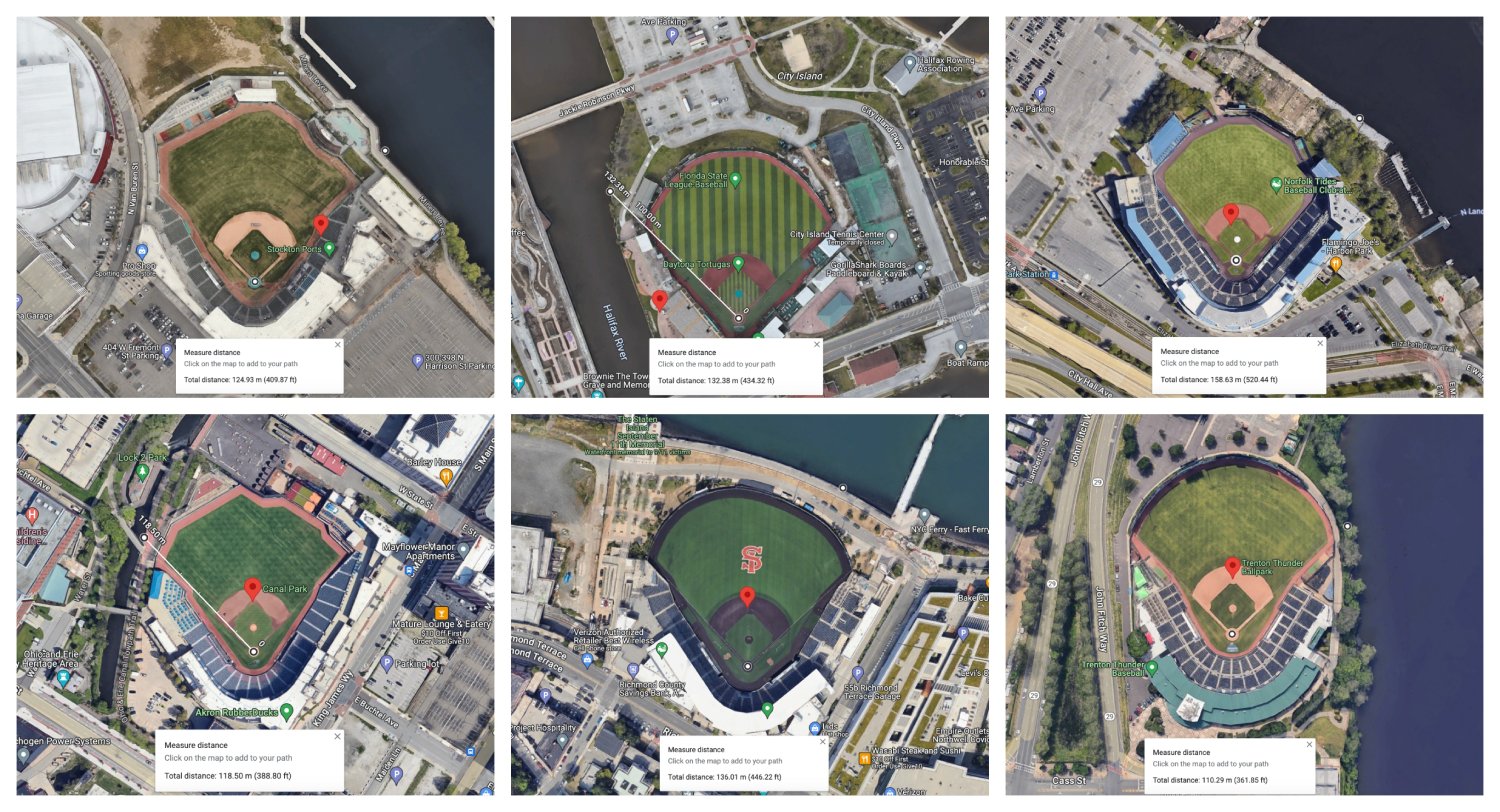
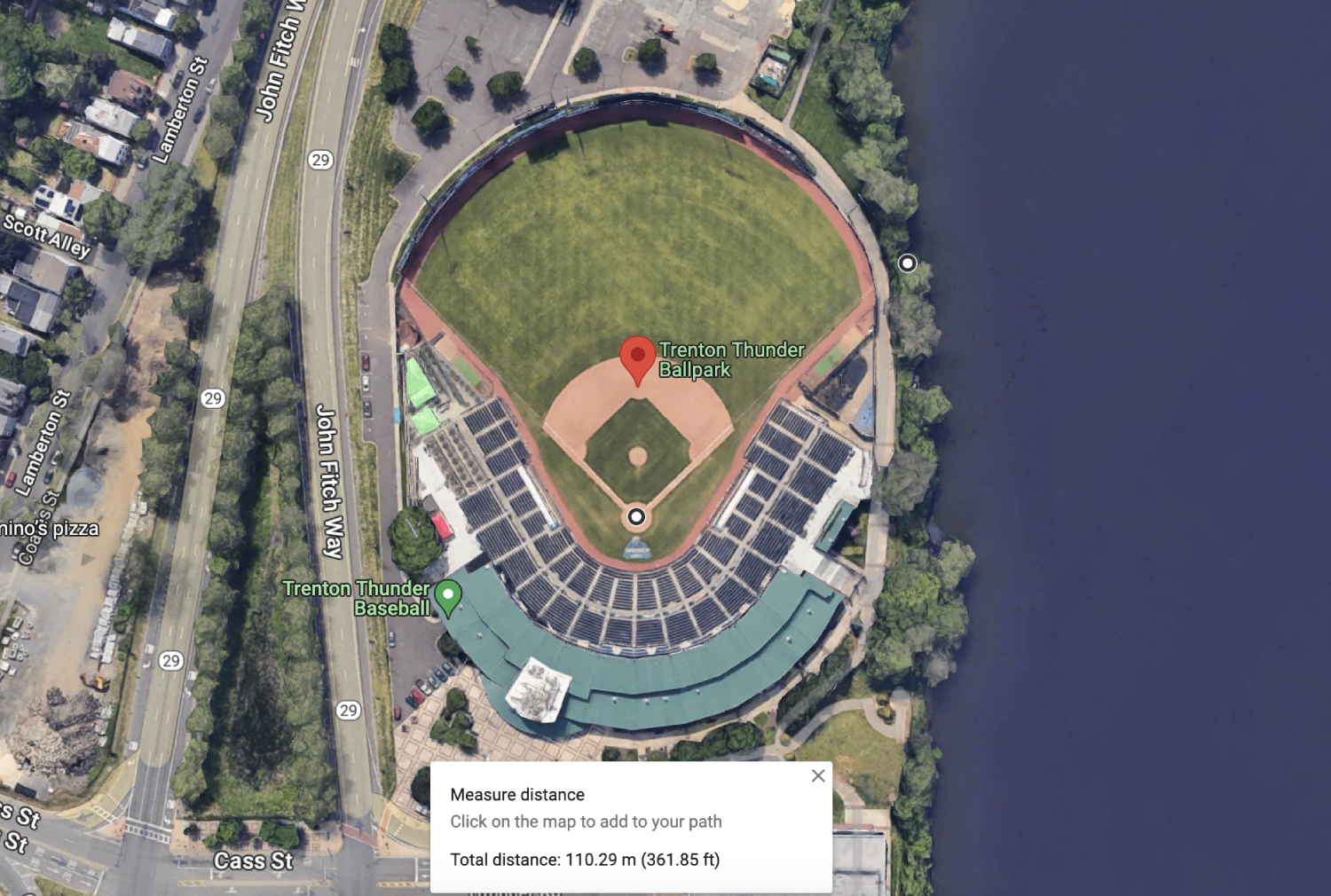
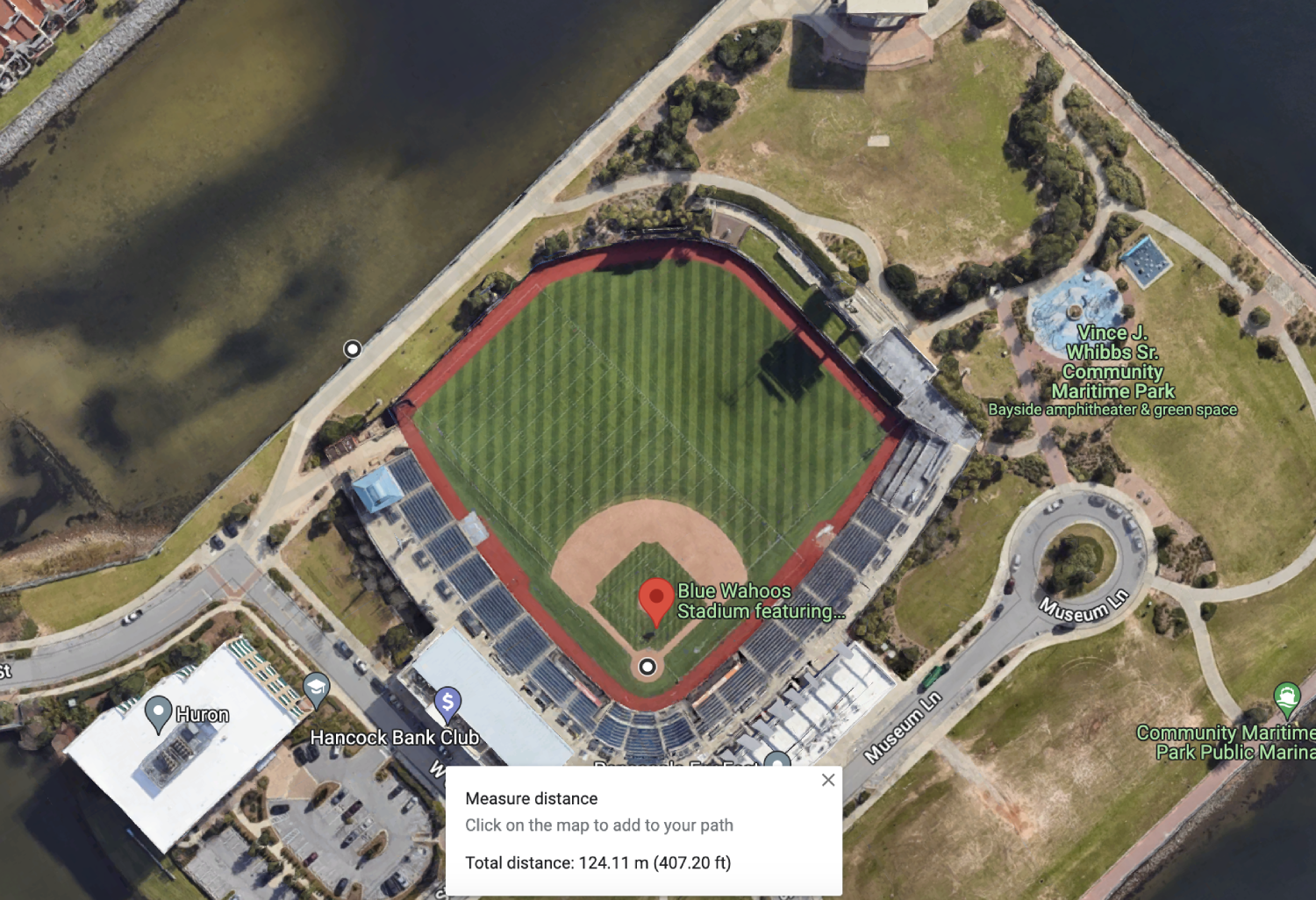
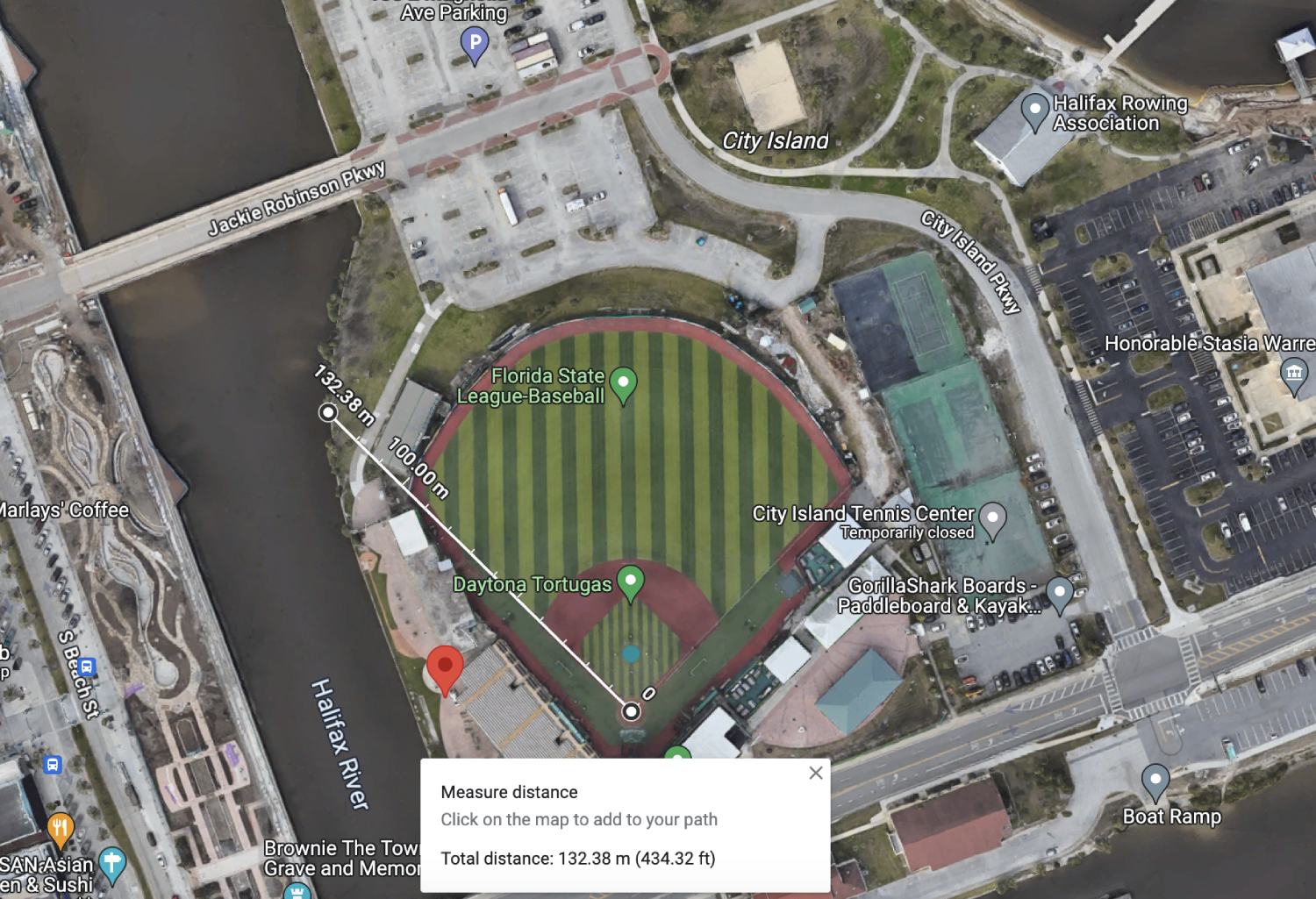
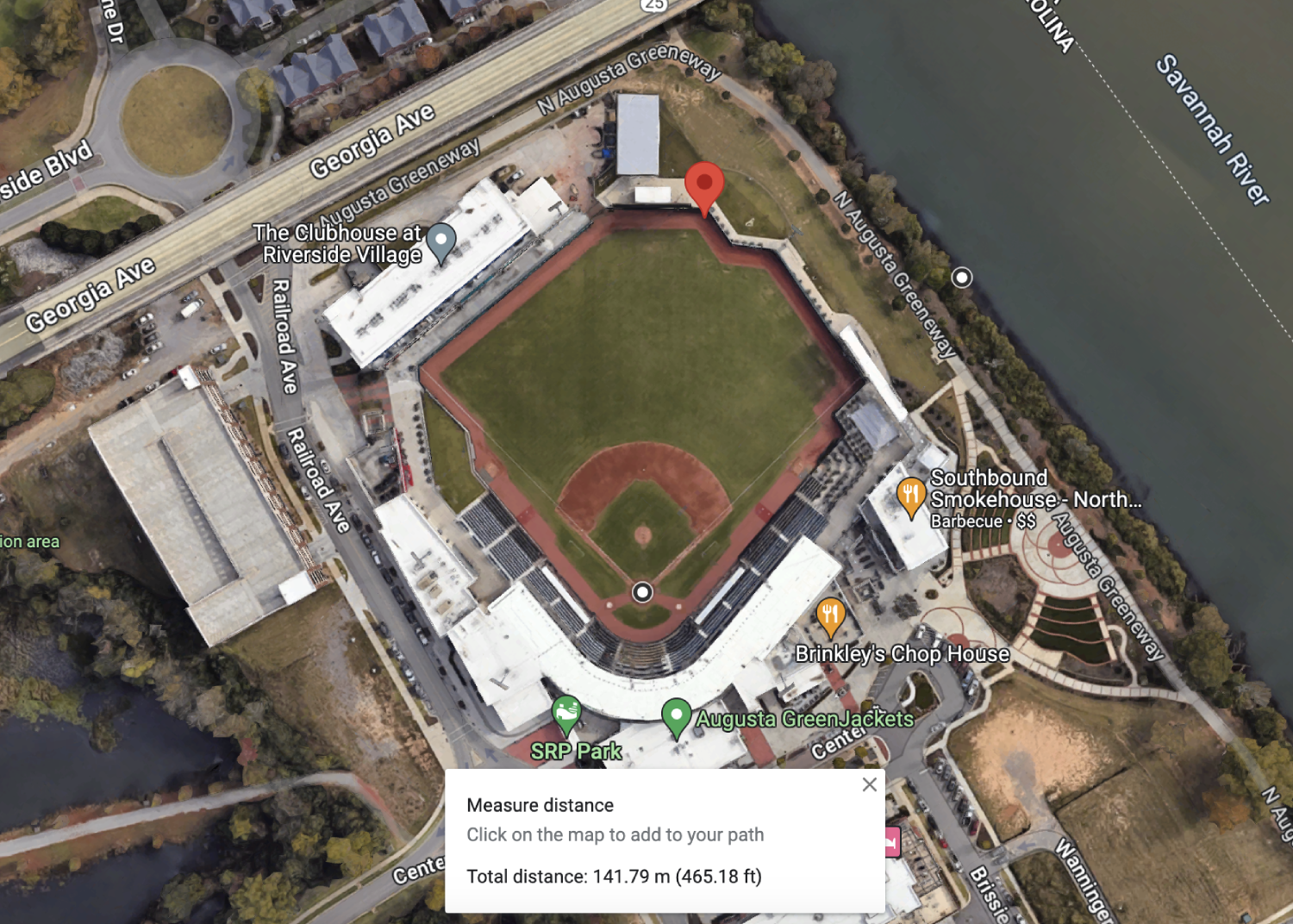
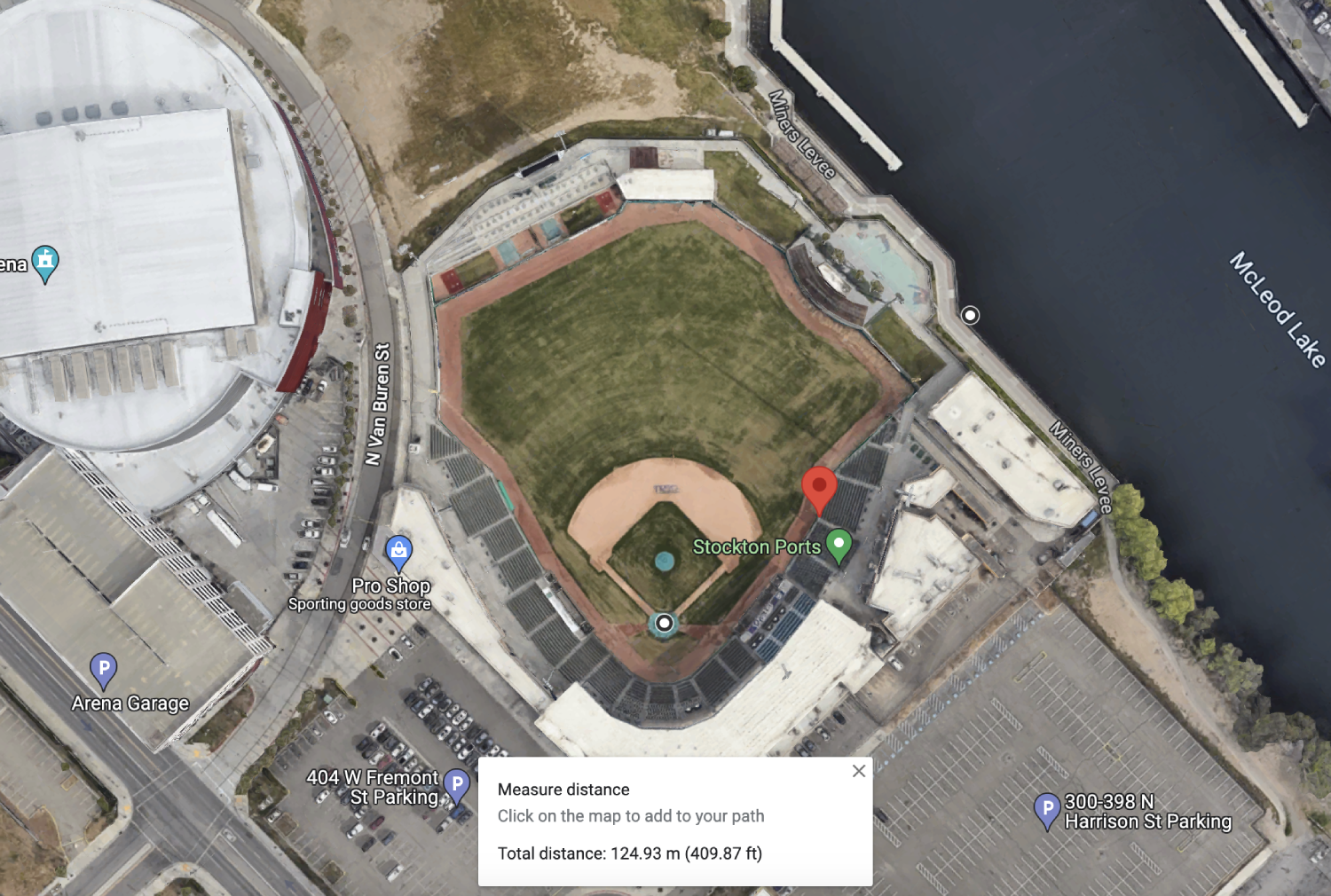
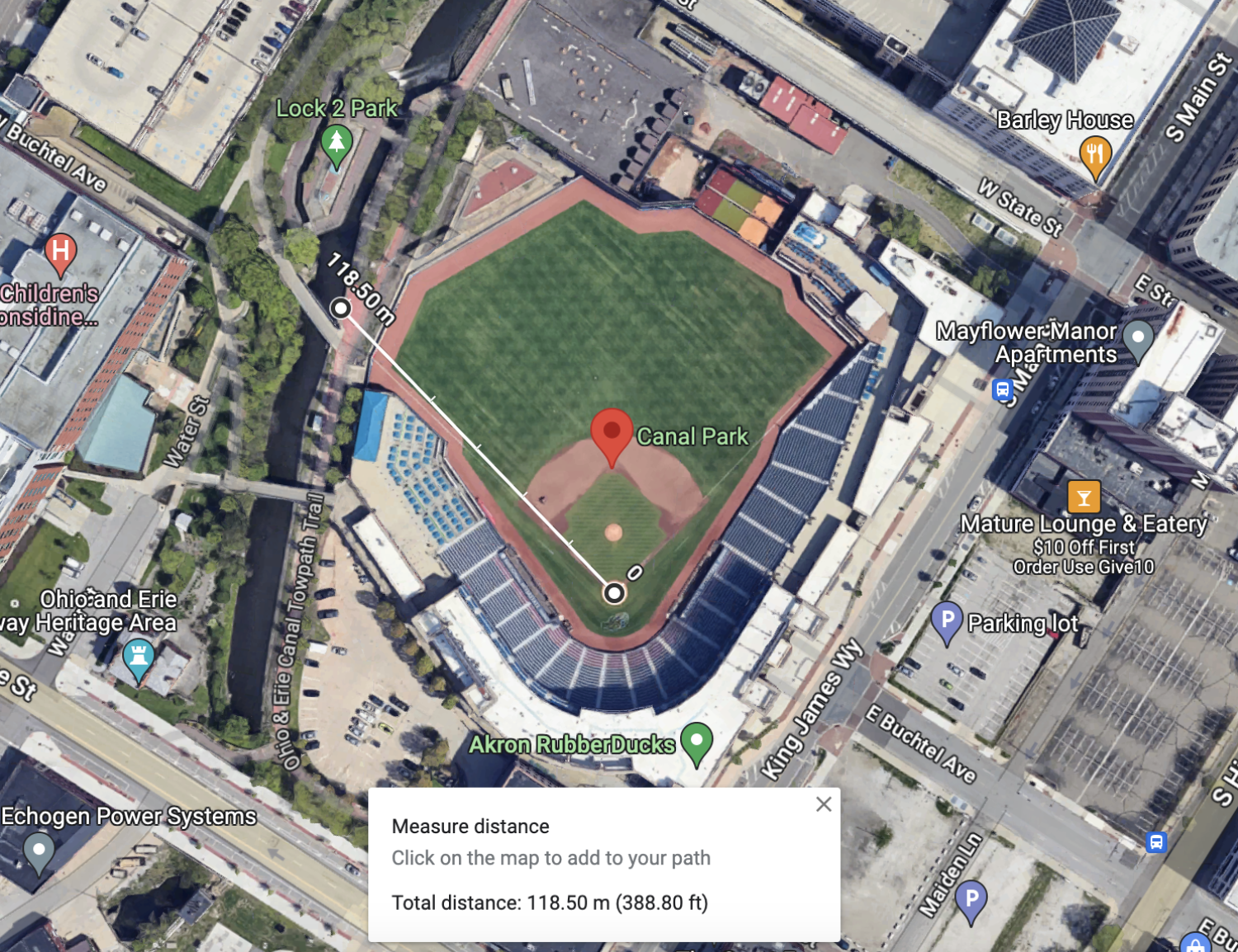
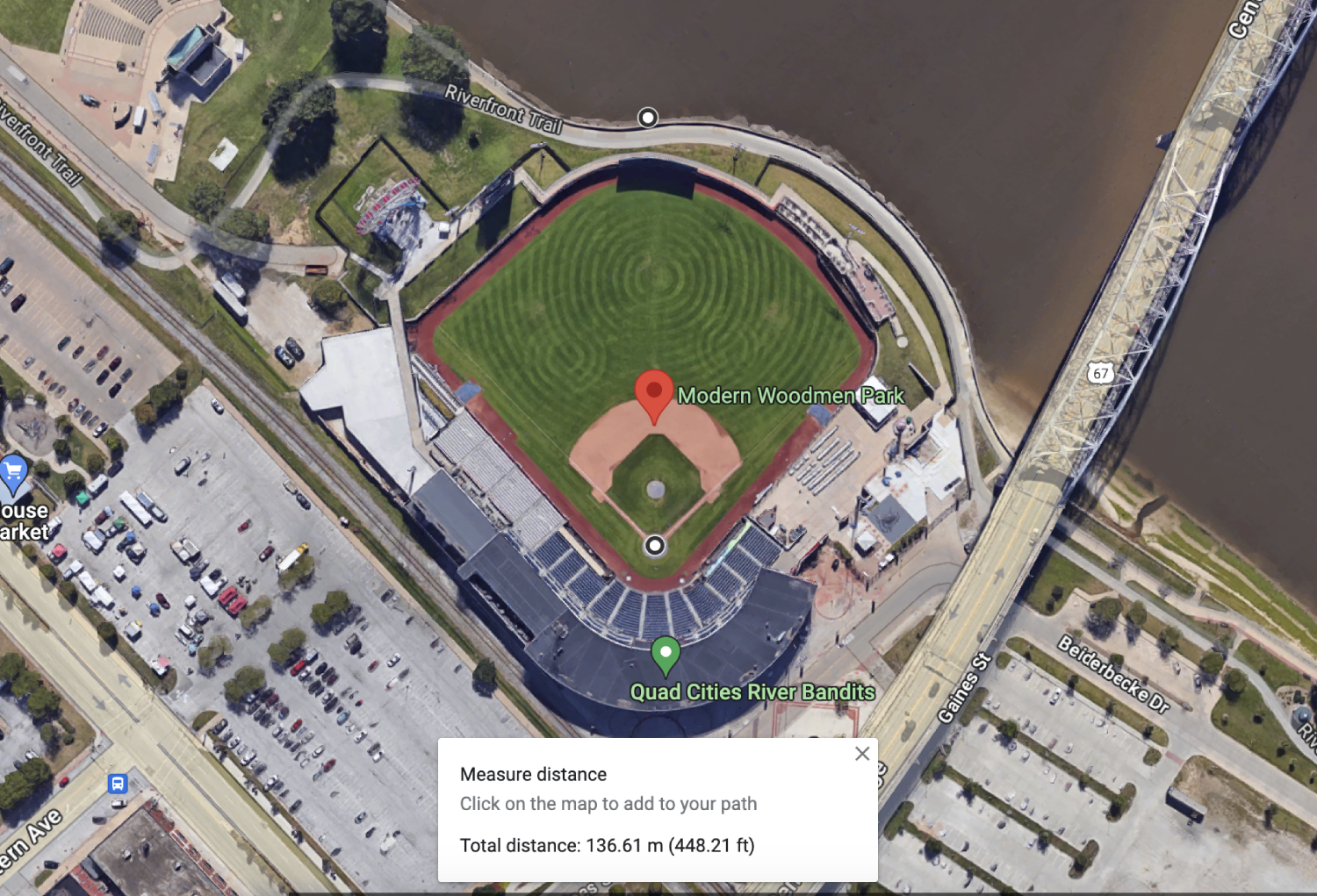
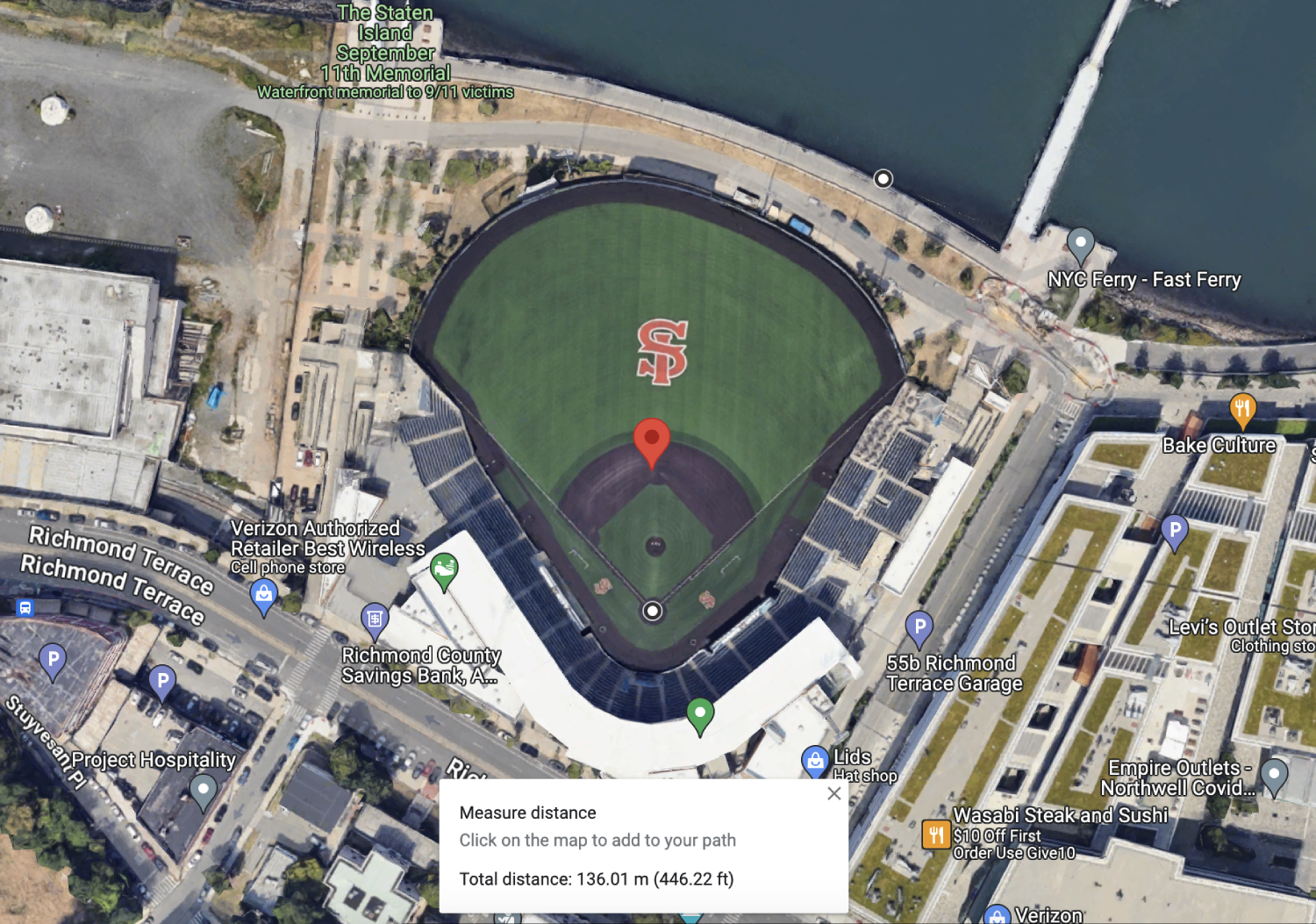
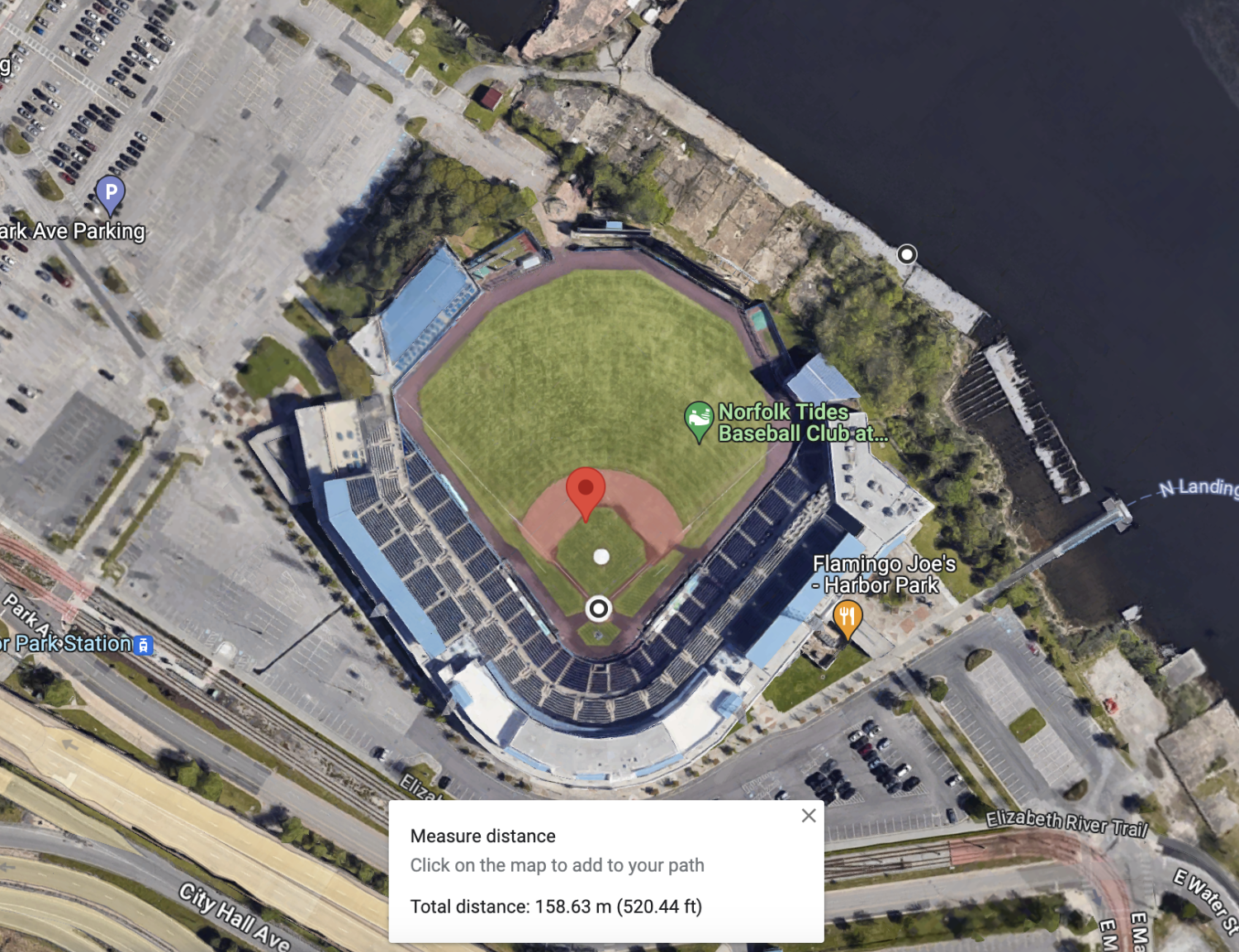
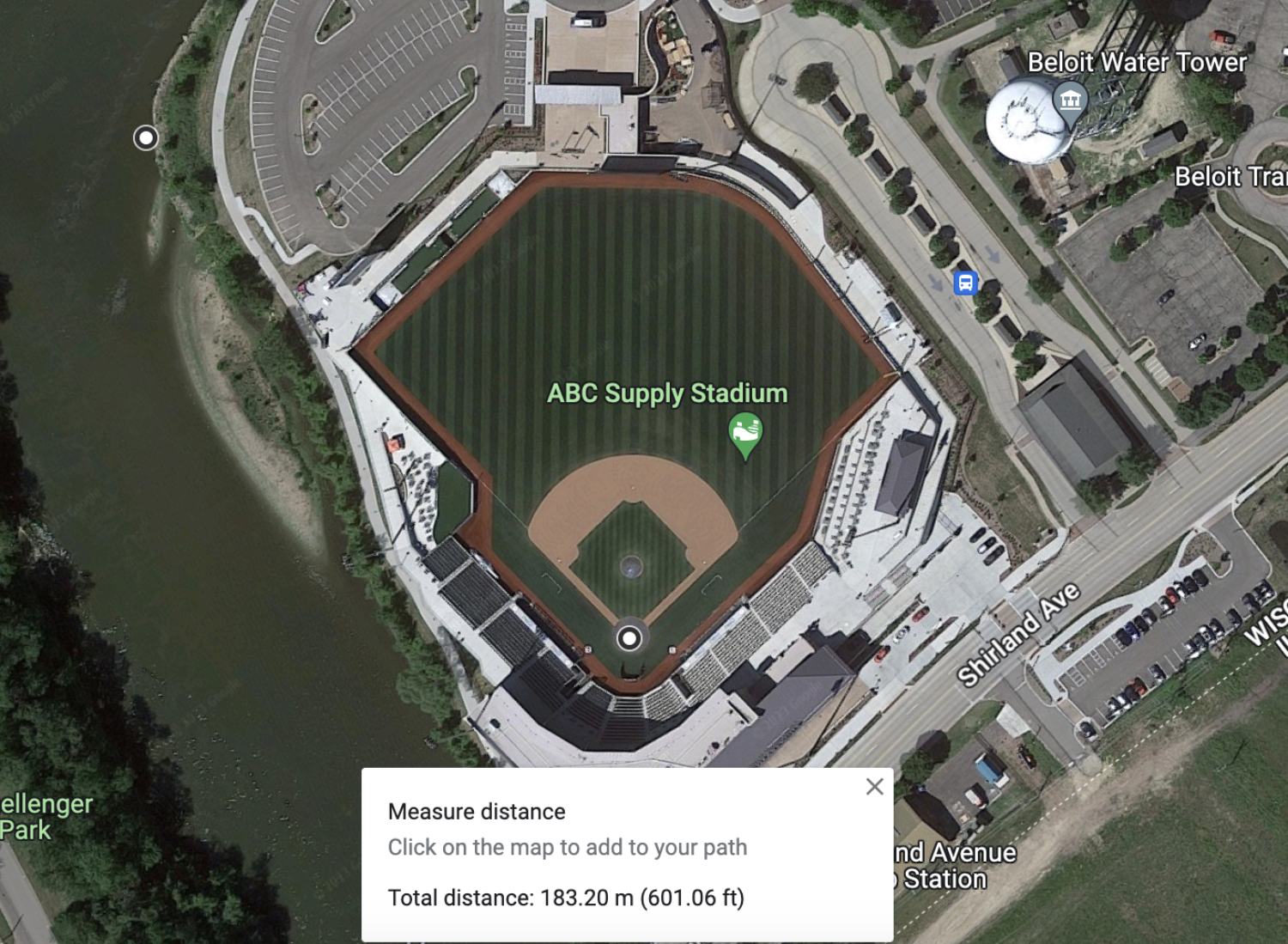
You must be logged in to post a comment.